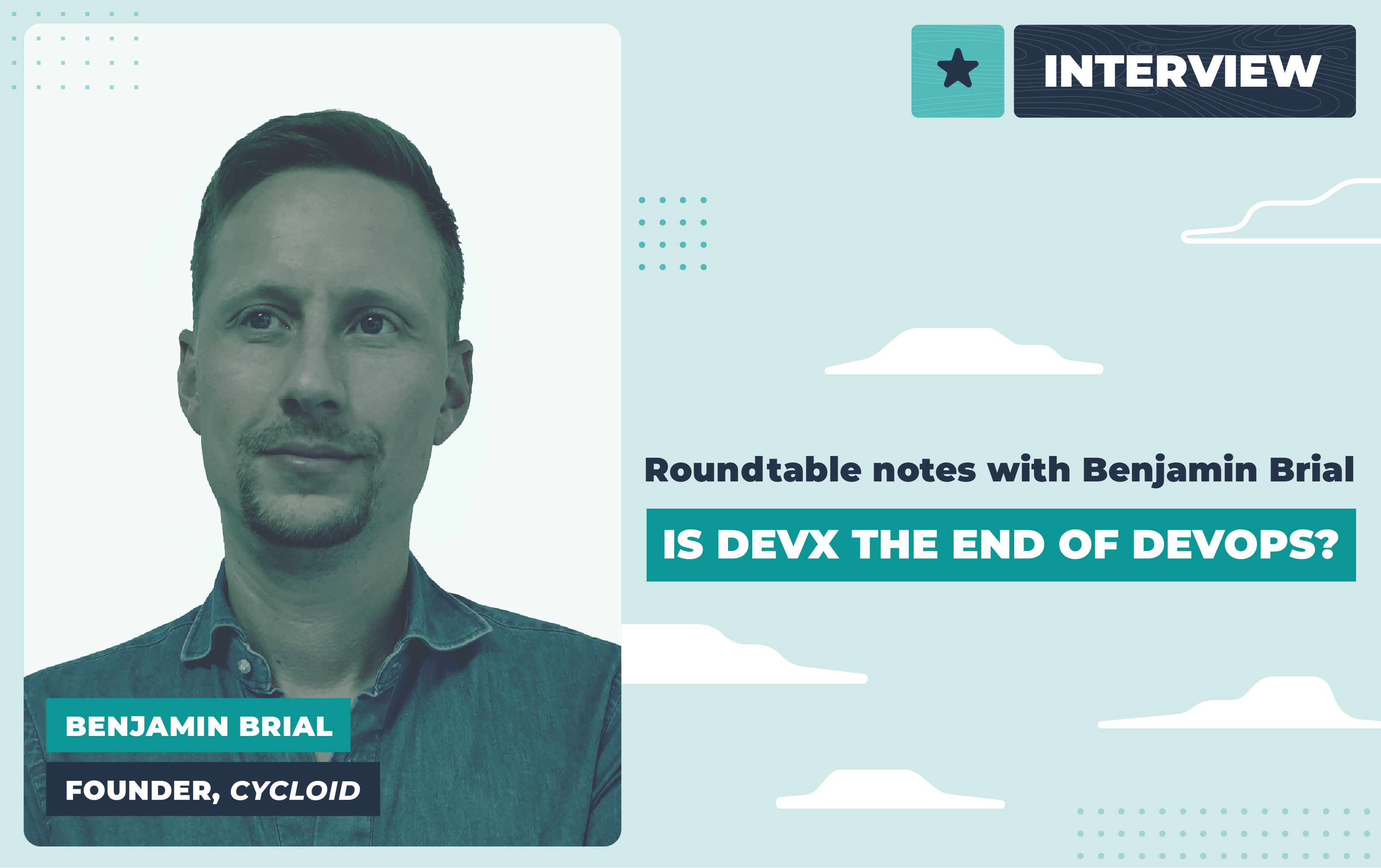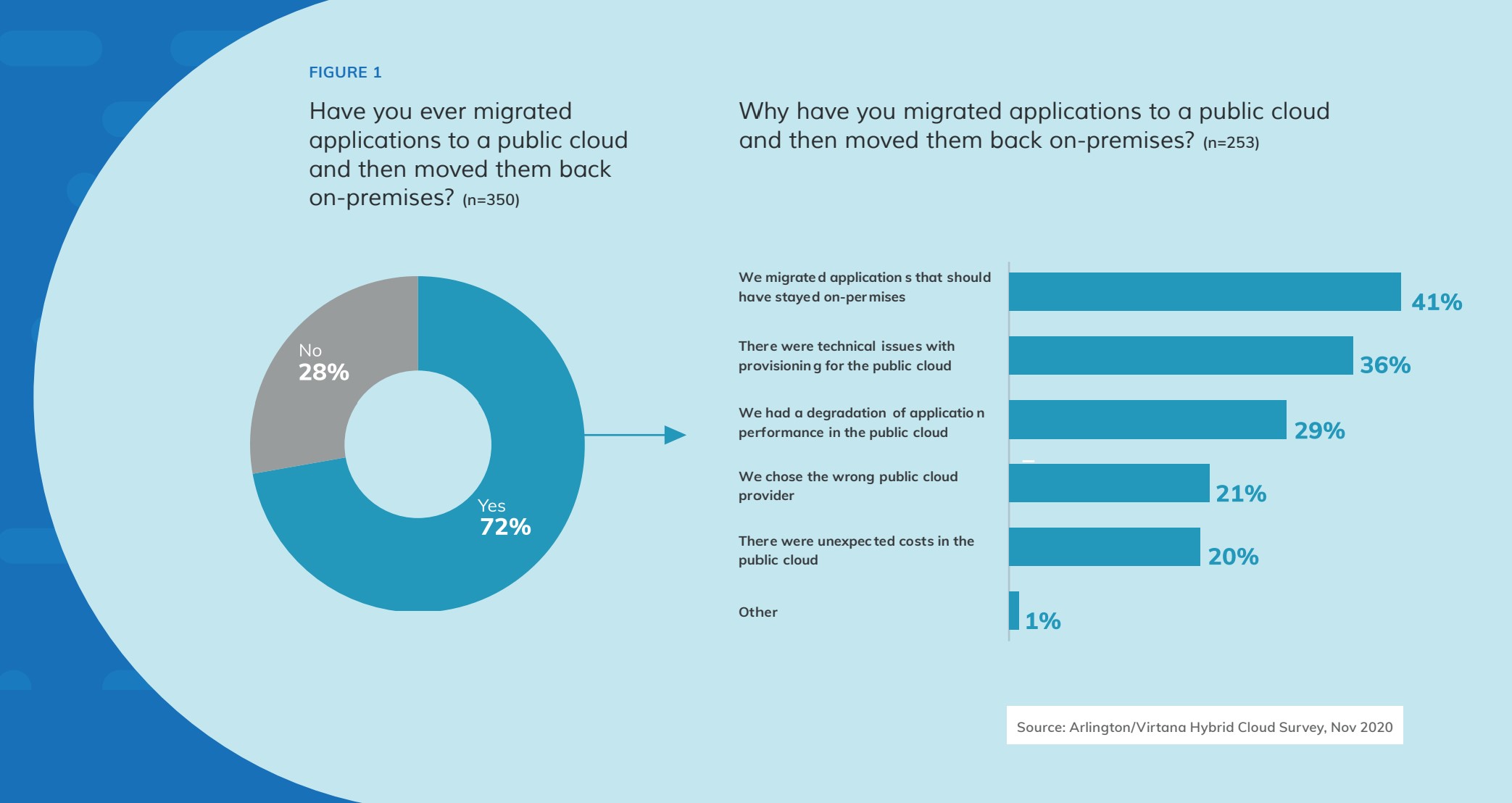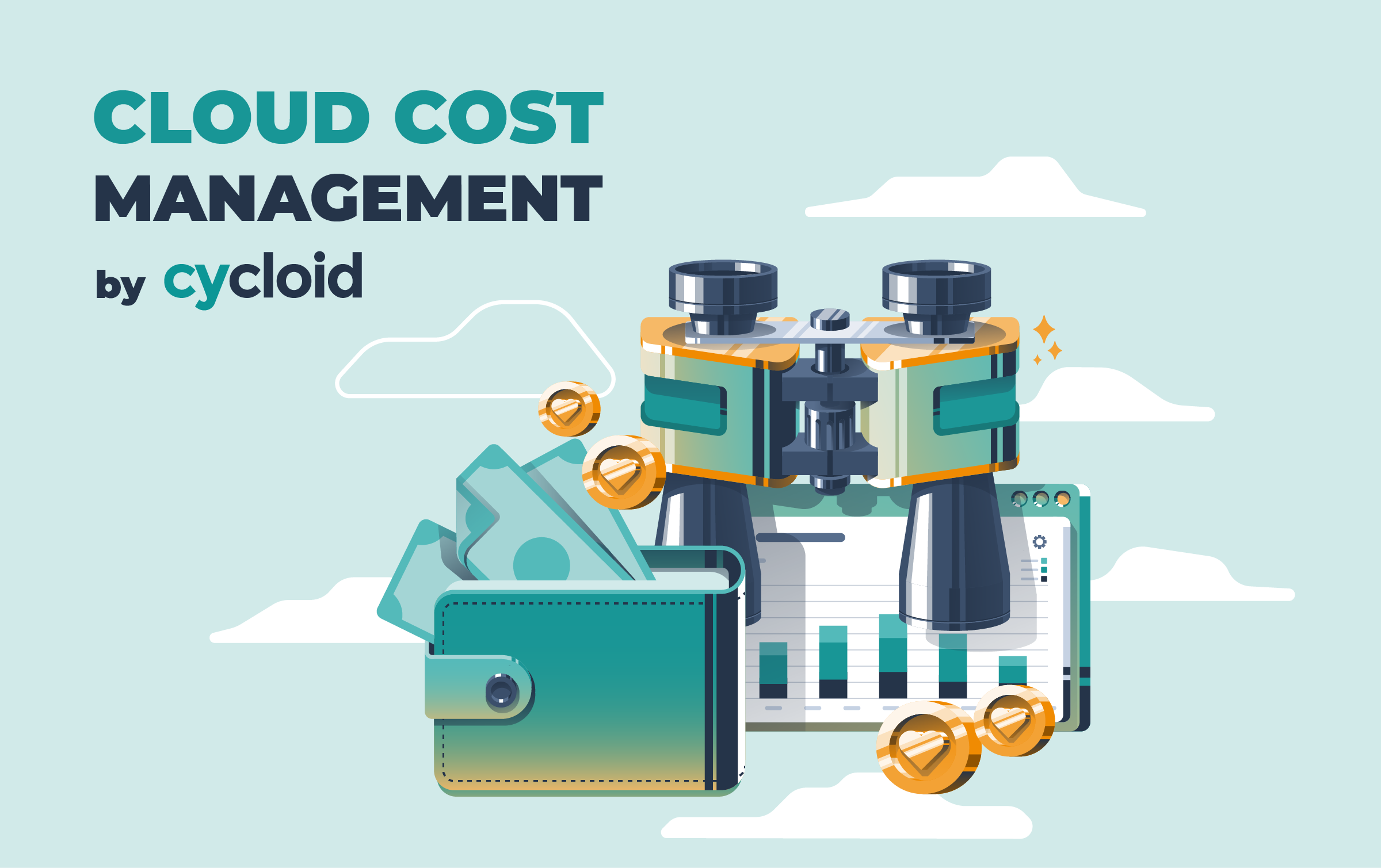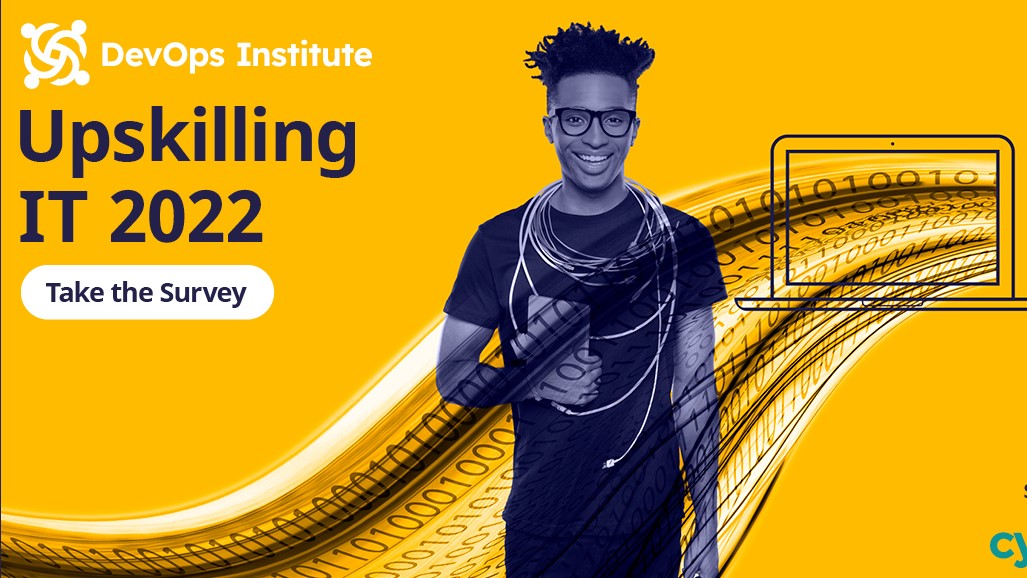Knowledge Library
Welcome to your go-to hub for all things platform engineering. Dive into expert insights with our blog, explore in-depth resources in our library, tune into inspiring conversations on our podcast, and watch engaging videos packed with valuable tech knowledge.

At the start of 2022 and ahead of the DevOps Institute's 2022 Upskilling Report, we made some predictions for the DevOps jobs market, upskilling, and how both topics link with developer experience (DevX). The report is out (and we're sponsoring it!) and the answers are in - let's see how aligned they were!
.jpg)
The 2021 fact: 80% of organizations are still struggling with DevOps adoption and that number hasn’t changed in 4 years.
Our opinion: This year will perhaps be the turning point for a lot of businesses. The developer experience topic is on the rise and it’s going to be one of the main things companies should focus on in 2022. Driven by the need to hire and retain skilled people, the experience you give your teams will become a key factor in building high-performance DevOps teams.
What the 2022 report says: As part of the report, Forrester suggests that only 21% of companies believe they’ve completed their digital transformation, which lines up pretty well with our estimation that 80% are still struggling or at least are in the process of transforming.
The report also draws our attention to an interesting distinction that it's important to make - the difference between digital transformation and IT transformation. True digital transformation transforms the whole business, and not just the IT team, and it could well be precisely this point where many businesses are struggling.
The 2021 fact: 49% of teams prefer to hire DevOps professionals internally.
Our opinion: Previous years saw companies struggling with hiring DevOps professionals, due to the specific skill set DevOps requires and the inability to even define the DevOps need in an organization. That’s why more companies will focus on upskilling their existing teams and hiring internally.
What the 2022 report says: Oh no! The 2022 report couldn't disagree more! Well, even though it agrees that upskilling is of major importance, still isn't always a priority for the companies that need it most. In fact, there are a variety of reasons why upskilling just isn't happening at the rate it needs to, among them upskilling not being a top priority for leadership (20%) and a company emphasis on hiring instead of upskilling (19%). Other respondents cited a lack of time and a lack of upskilling opportunities.
The 2021 fact: 70% of IT professionals believe building a learning culture was one of the top DevOps ways of working.
What the 2022 report says: The writers of the report (the DevOps Institute) couldn't be clearer, which is why it's strange that it contrasts with the results of the report so much. Loud and proud, the report says:
"Upskilling is a professional and organizational imperative. Continuous
learning must be foundational for leaders and individuals and requires
a mind-shift across leaders and individuals."
...and yet Insufficient Skills or Resources are respondents' number 1 problem. It seems pretty simple - continuous learning is important and businesses are lacking skills. Upskilling would tick both boxes - so why is upskilling not a priority for more people?
The 2021 fact: Automation is the number 1 priority in the upskilling agenda.
Our opinion: Related to automation and digitalization - the use of a dedicated internal developer platform will become more commonplace as organizations bring legacy systems together to form hybrid cloud platforms for the DevOps teams to use. A Platform Engineering team should be an extension of a DevOps team, not a replacement for it. The risk to watch out for is the temptation to build a DevOps platform while trying to create your Platform team.
What the 2022 report says: Yup, the report backs up our suspicions. Automation is seen as a major priority in the fight for digital transformation and the move to DevOps, up there on a par with the human skills we'll speak about in a minute.
The 2021 fact: Collaboration, interpersonal skills, flexibility, and adaptability are key in the next normal.
Our opinion: It’s important to keep in mind that a platform engineering team needs a broad set of skills ranging from security to operating systems and containers and just as important are soft skills like communication and collaboration. A DevOps platform team should be laser-focused on infrastructure, not DevOps Platform development.
What the 2022 report says: Indeed, there's no ying without the yang. As much as you need technically skilled team members (and need to let them concentrate on their main job, which is digital transformation and not platform maintenance), you need to make sure both the team and its individual members have a balance of skills. In fact, the report points out the skills that people feel are missing from their teams at present, and both automation - our favorite - and people skills are just about level pegging.
Interesting, right? While industry thinkers can see the barriers and opportunities to digital transformation quite clearly, businesses seem to be facing massive conflict when it comes to actually making a change. Even though they see the problems they are facing - a lack of talent, a lack of balanced skills, and a lack of appropriate upskilling opportunities - their businesses are not actually making any progress towards change.
Perhaps, then, you have the advantage? You're here, and you're seeing the dichotomy. Will that give you the edge when it comes to figuring out the path your business will take? Only time will tell - read the report in full to make sure you have all the information you'll need to make your decisions.
{{cta('15095d1d-0e4c-4f70-9205-3e38b4a7add2')}}
...Developer experience (DevX) is becoming a hot topic and, in 2023, one that tech and non-tech companies alike can’t afford to neglect.
Last month, Cycloid hosted a closed roundtable discussion titled “Bridging the DevX Gap,” where we invited journalists from notable tech publications like The New Stack, Computing, Computerworld, The Register, and TechTarget. Led by Rob Gillam, our head of sales (who also wrote on DevX), the panel was made up of Cycloid founder Benjamin Brial, CTO of Orange Business Services Philippe Ensarguet, and James Governor, founder of Red Monk.
The guests went in-depth on the definition of developer experience, discussed how to start looking after the 99% of developers and suggested what awaits DevX in the future.
"The day we decided to care about the experience, the journey of the team, and the way they access the tools was a game-changer"
The panel agreed that in absence of a DevX approach when understaffed teams of developers are being forced to take time away from writing code, they dedicate valuable resources towards managing issues associated with highly complex, multi-cloud toolchains held together by nothing more than sticky tape and string - and that’s the reason efficiency is dropping.
Philippe Ensarguet shared his experience in improving DevX at OBS to ensure its 4,000+ developers don't see themselves as mere cogs, are happy and productive, and are not weighed down by excessive management of toolchains and other non-core duties. The results, he says, were astounding. "The day we decided to care about the experience, the journey of the team, and the way they access the tools was a game-changer," Ensarguet said.
James Governor expanded on his definition of DevX as “creating an environment where developers can do their best work.” James says that good developer experience requires leadership to take a more authoritative role and not leave choosing tools and setting up processes up to the developers. Professionals with the experience to both produce high-quality code and manage the toolchain are few and far between, so it's important to take these questions out of devs' and into the exec team's hands.
"The team leader's role is to put their developers in the best position to handle tools, processes, and infrastructure"
A question from the audience drew a definitive line to their discussion and summed up their thoughts and experiences - “Does that mean that DevX is the end of DevOps?”
We asked Benjamin Brial to expand on that and share his thoughts on improving developer experience.
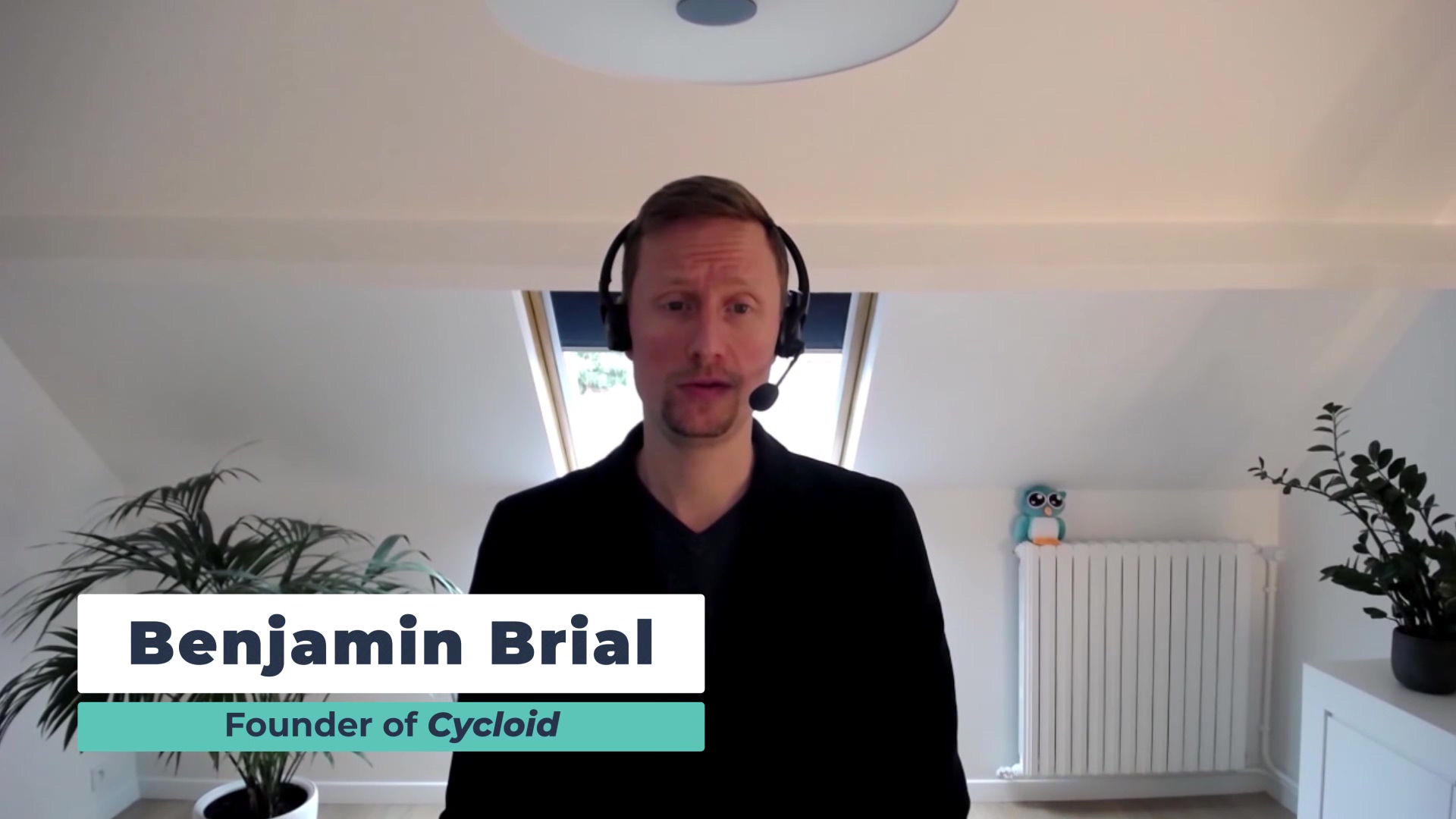
Could you define what DevX is all about, and why there’s such momentum behind it these days?
DevX means creating the best possible environment for the developer to do the most efficient job - because, at the end of the day, that’s what it’s all about. This doesn’t mean the developer has to write thousands of lines of code daily, but there shouldn’t be any obstacles for them to do so. Your devs need to be free to innovate and interact efficiently with tools, infrastructure, and clouds.
Why is it important these days? Simple - TTM (time to market) has decreased, so there’s a lot of pressure to ship new products as soon as possible (or another company will do it faster). However, the abundance of “productivity” tools and processes has actually started to impact efficiency in a negative way. Now there’s a need to simplify, to bring a better experience - and DevX is the answer.
Where does Cycloid fit in the DevX discussion?
Today a developer interacts with on average 28 tools that he/she is interested in - do we expect them to know each and every one? No, because that’s the role of DevOps - and not everyone can become DevOps. This means that the team leader's role is to put their developers in the best position to handle tools, processes, and infrastructure.
This is where Cycloid comes in. We replace non-user-friendly, half-baked internal solutions with a simple, visual platform that takes care of automation and the cloud, and helps devs interact with tools and infrastructure in an efficient way. You don’t need specialist knowledge or an army of DevOps engineers that are difficult to find and retain - your devs take care of their needs autonomously and have a better time doing it. It respects the GitOps approach and provides zero lock-in to help DevOps teams to scale by decreasing the number of open tickets by end-users, as well as keep the governance and avoid reinventing the wheel all the time.
It’s important to note though that Cycloid is not a DevX tool, it covers a very important part of your DevX journey.
Not all companies have the same resources (or needs) as Spotify, Zalando, Airbnb, etc. How do you think we can lower the barrier of adoption for every organization?
Most companies were not built around technology and have decades of legacy software practices, just the same as not every developer can work in the DevOps mindset - this is really the target audience of a DevX revolution. Before starting your DevX journey you should ask yourself 2 questions.
First, how can my developers have the best user experience with tools and infra? The market seriously neglects UX for developers even though it can severely impact efficiency - and their experience on a project.
The second aspect is for the company - how can I help my developer be as productive as possible? Too often executives let devs choose their own tools and that’s not always the best way forward. Sometimes you need to take these matters into your own hands. How the product is shipped should be a collective discussion between leaders and the team.
At the round table, you all came to the conclusion that DevX does not mean the end of DevOps. Can you please reiterate your perspective here?
Frankly, that assumption doesn't really make sense. Both DevOps and DevX are a means to a goal - improved time-to-market. DevOps best practices complement developer experience, which in turn helps produce high-quality products fast. Giving your devs autonomy and freedom to focus on coding doesn't mean DevOps will have no place in your approach. Even if not every developer will become DevOps, every developer deserves an environment that supports and encourages them to do their best work.
And finally, where is DevX heading?
It’s still a very new concept so first, we need to come up with a clear end-to-end definition of DevX. So it’s hard to say what is coming in the future. One discussion I would consider important is the ecological impact - mainly the carbon footprint of letting devs choose the best tools and infrastructures and how to do it in the greenest way possible.
Cycloid founder Benjamin was interviewed recently on the DevOps podcast Sudo Show
{{cta('e95a1f69-c067-40a3-ac14-b7f6ba2c500a','justifycenter')}}
...A suitably designed, integrated and managed hybrid cloud ecosystem can be as secure and efficient as conventional on-premises IT. However, actually making one a reality in your enterprise includes overcoming barriers around governance, risk, and operations.
Today, we’ll look at how IT leaders can ensure that the right foundations are in place to optimize the management of a hybrid cloud environment. Every environment is unique - there’s no one-size-fits-all. Instead, enterprises must organize and build resources that are suitable for their specific needs.
Start by asking yourself...
Why do we need to optimize hybrid cloud management? What key issues are causing inefficiency?
In a recent study by Flexera (Flexera 2021 State of the Cloud Report), 80% of 750 respondents say they've adopted a hybrid cloud strategy by combining public and private clouds. As this hybrid cloud approach evolves, optimizing the management of a hybrid cloud ecosystem will also require an adaptation of cost management, controlled governance, and security workloads and data as much as possible. The real challenge is not to be totally dependent on a single model and to ensure that all the advantages resulting from hybridization lead to proven added value and more efficient IT operations.
But this is no small feat - several issues can make a hybrid cloud management optimization approach totally ineffective.
For example:
Virtana's The State of Hybrid Cloud published in February 2021 shows that no single cost visibility tool makes up more than 20% of the tools used by the 350 organizations surveyed. This indicates that companies are finding it difficult to agree on a clear approach and a common tool for cloud environments. The multiplicity of tools, dashboards, and other standalone approaches designed to optimize and give visibility to spending increase complexity and lead to confusion. Avoiding this and moving forward with a clear vision and precise cost management in the hybrid cloud context avoids unnecessary expenses and will help companies create controlled cloud budgets.
According to NTT's 2021 Hybrid Cloud Report, 46.3% of respondents indicate that “building and managing a comprehensive cloud security program is the number one barrier to adopting hybrid cloud”. It's crucial to remember that security and compliance must remain at the heart of hybrid cloud management and optimization decisions. Having a limited vision and consideration of these principles will inevitably create problems in optimizing the management of security policies, risks, or even data (sensitive or not) between different environments.
Finally, as Flexera points out, other challenges can arise. Namely, issues related to governance or the lack of resources and expertise. 75% of respondents declare this to be of critical importance, so we can therefore assume it greatly influences the adoption or optimization of a hybrid cloud ecosystem. Anticipating these challenges and taking them into account is essential if you hope to establish the right foundations.
What happens if we get the foundations wrong?
As you might suspect, if the right foundations are not in place then the entire hybrid cloud ecosystem becomes fragile. Worse still, the adoption of certain good practices could be more difficult, take more time, be completely impossible, or even counterproductive.
How can enterprises organize and build resources that meet their specific needs?
In short: feedback. By having a clear and precise vision of the state of their current capacities and resources, as well as of needs to be met in the future. This will allow companies to implement the necessary means to correctly prioritize and respond. A DevOps approach, for example, makes it possible to instill a culture and practices useful for acquiring the agility necessary to organize and build the appropriate resources, but also to collect feedback and quickly change strategy if it is not working as hoped.
What examples of good practice can be shown here?
To optimize hybrid cloud management, a first step would be to unify IT tools as much as possible, use technologies that are not dependent on a specific vendor (in other words, avoid vendor lock-in), and take advantage of this unifying approach to obtain increased visibility of the various private or public environments that make up the ecosystem (resource use, costs, or even security, for example).
Thinking of automation as a cornerstone of operations and rapid reproducibility without human error, as well as the principles related to monitoring and observability (to allow teams to be increasingly proactive with regard to system events and performance) would be also a good idea. Finally, as mentioned, security and compliance are major issues in optimization, and integrating these aspects into the thought process is important good practice.
What are the pitfalls when trying to optimize hybrid cloud management? How can they be avoided/mitigated?
A few that come to mind are:
Too many complex tools, technologies, or processes
Of course, hybrid cloud management is evolving and no one is able to say which toolchain, model, or approach will be dominant tomorrow. In order to reduce the complexity of management and operations, and also to anticipate rapid changes, it is necessary to limit tools and technology approaches as much as possible by favoring those that are agnostic and relatively mature.
A lack of planning for future skill requirements
With a multiplicity of environments, technologies, and tools and a need for more advanced and complex optimization, the skills required will be important, numerous, and difficult to access. Anticipate this by planning, training, and hiring well in advance.
Not giving enough importance to changes
Those managing a hybrid cloud ecosystem must establish a very rigorous change management policy. Indeed, cloud environment optimization phases inevitably involve changes, and like any change, no matter how small and controlled, it can strain or break entire systems. This makes it essential to ensure the proper functioning of environments, the ability to detect and reverse a problematic change, or simply follow the progress of optimization decisions.
Once hybrid cloud management is optimized, what should CIOs do next?
In my opinion, optimized management of hybrid cloud environments is a continuous process. Even if it is difficult to initiate at the start, it must be resilient and flexible to changes that can occur very quickly and without warning. The next step for CIOs is to imagine how optimization needs can become less complex, faster to implement, and ultimately less expensive in the future. Would the further use of artificial intelligence as a hybrid cloud management aid be relevant?
Each environment or context is unique. This is why the steps to optimize hybrid cloud management will be radically different from one company to another. However, the real challenge for companies is above all to gather as much information as possible and to clearly identify the strengths and weaknesses of the management of their hybrid environment before making optimization decisions. Because after all, good preparation will always lead to more efficiency than a decision hastily taken.
This blog post is part of Cycloid's Life in the Fast Lane series. Download the companion ebook Life in the Fast Lane: The dual journey to DevOps and hybrid cloud mastery here.
{{cta('2751bbfa-7996-4e11-8cff-b2d294262e73','justifycenter')}}
...Cycloid's delighted to launch their cloud cost management module, the next iteration of Cost Estimation, and the tool that's going to help you and your team see exactly how, where, and when your cloud budget is being spent.
TL;DR
Cloud cost management is Cycloid's newest FinOps feature that allows you to set your cloud cost budget and generates a graphical representation of exactly how it is being spent. It lets you break spending down into categories like organizations, teams, and regions. You can then further sort via filters. These can be per account, per project, by date, and more, and you can use the tags you’ve already created via your cloud provider, making the information even more customizable.

The problem
We're sure you don't need too much explanation as to why it's so important to know exactly what your cloud budget is being spent on. What often happens, however, is that the setup of teams gets in the way of true visibility, no matter how important we know it really is.
In some companies, especially larger ones, the people managing the cloud bills have no real visibility into the day-to-day reality of the spend. That means that the first time they know what's been used is the day they get the bill, possibly only once a quarter or year! That's too long to be in the dark when it comes to modern hybrid cloud infrastructures and fast-moving business.
Another group of people who suffered when things used to be different - those who use multi-cloud. Each of the cloud services offered a breakdown of spending, sure, but there was no way of seeing the breakdown of all the services taken and assessed together. To get around this, some companies opted to manually compile information to create reports. But this still isn't ideal, as it siloes the information in the hands of the report-creator and, apart from anything, is a time-consuming and frustrating job.
Enter cloud cost management
Cloud cost management is here to make your life easier. Here's how it works.
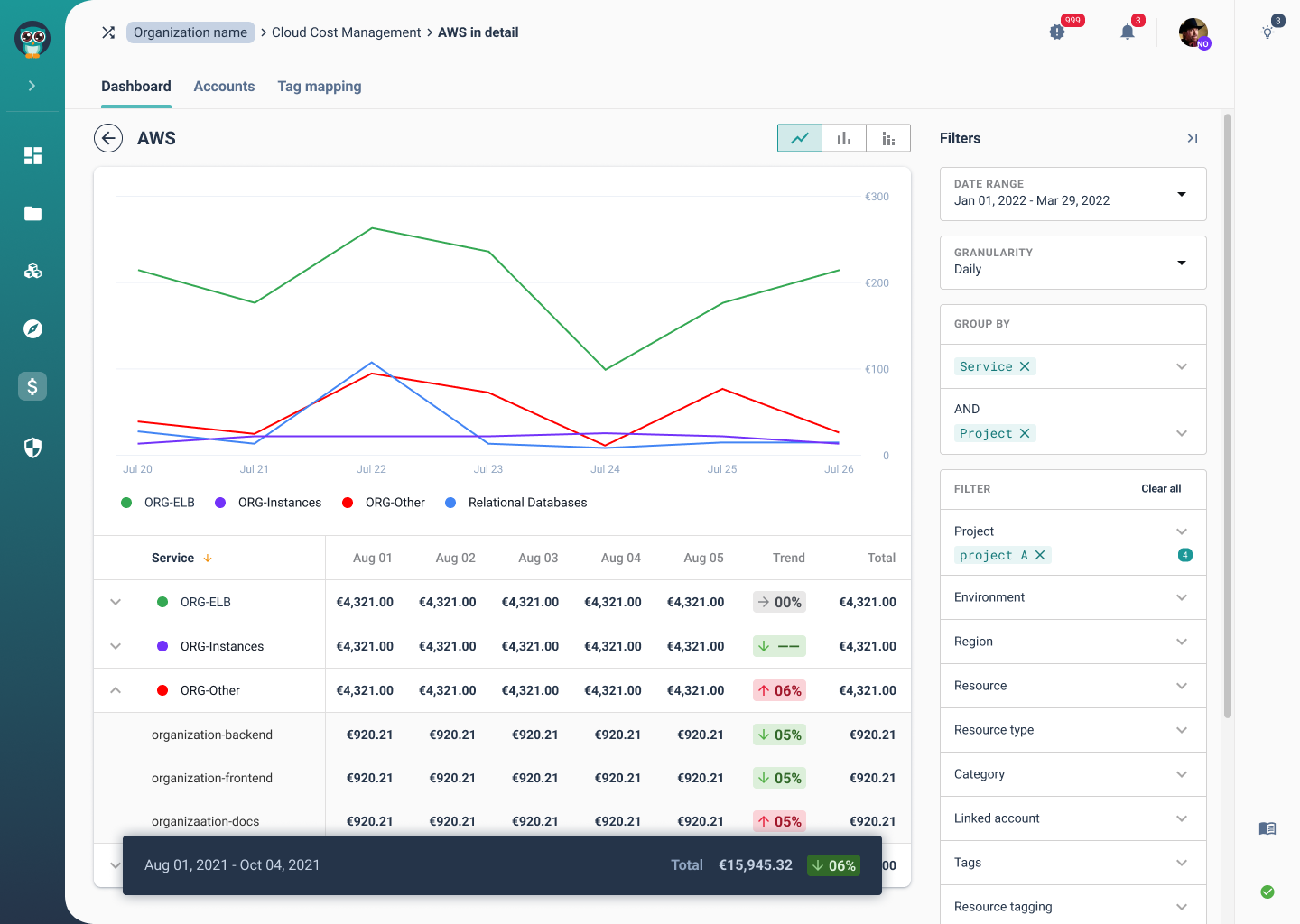
-
-
Add cloud accounts in “Accounts” (AWS, GCP, and Azure for now, and more added on request)
-
Cycloid collects billing information and creates reports
-
Interact with these reports via filters
-
An accessible, graphical representation of data
-
An accurate breakdown of cloud spending
-
Cloud cost management is a massive step forward for FinOps in your org. It simplifies your toolchain and means you don't need to resort to (yet another) complex tool or workaround. It's also worth pointing out that Cycloid is the only DevOps platform that currently offers this functionality!
Already a Cycloid user? Log in now to check Cost Management out.
The future of cloud cost management
From Cost Estimation to cloud cost management and onwards! The future's looking bright for FinOps with Cycloid. Soon we'll be upgrading the tool to provide recommendations for optimizing costs, followed by active budget management with monitoring and alerts. Right now, you can try the feature as part of our demo, which you can access below.
{{cta('cd4ea7d3-7522-4e40-b16b-27cf29292131','justifycenter')}}
...Ok, there’s one thing we need to state clearly before we begin. This article isn’t going to tell you what public and private clouds you should use in your search for a DevOps-friendly hybrid (multi) cloud solution.
Unfortunately, that decision can be made by you and you alone.
Instead, we’ll try to teach you to ask the right questions, which will lead to you making the right decisions for your situation and needs. Ready to learn how to ask the right questions?
Excellent, let’s begin!
To start, remember why you made the decision to move to hybrid multi-cloud. At times, the process will be frustrating and, on those days, you’ll need to remember why you decided to change. In short, you’re looking for the ability to scale up and down without having to worry about physical space and people, and once that worry is out of the way, room to focus on your product, rather than the machinations around it.

Should my current automation affect my choice?
Absolutely. As a DevOps-first team or organization (or one with DevOps ambitions), it’s likely that you’ve been making inroads on automation for a while now and there’s no reason you should have to sacrifice them to move to the cloud.
Before making a move, it’s essential to take stock of your current automation and decide how best to manage it in the migration. Depending on your current set-up, this can vary hugely, so it’s important to be really clear on the ins and outs of your specific needs - it’s unlikely to be a use case that anyone else has planned for! Automation is key to DevOps, and you need to support any you already have in place unless you’re very sure it cannot be used or leveraged as you move forward.
Next up, take a critical look at your applications, microservices, and products. How mature are they? Will they make good use cases to assess your needs for hybrid cloud? In DevOps, simplicity reigns supreme. You need to ensure that your chosen provider can offer a service appropriate for your use cases, obviously, but award serious bonus points to the provider that can do this in the simplest way possible.
Is there anything that can act as a bridge between public and private cloud?

I’ll confess right now - I’m definitely plugging our product here. That said, you can take it in general terms to let you know that when you’re making a choice in both public and private cloud, it’s essential that you pick a tool that will help you to manage both. Moving to the cloud, once you get over the initial set-up and rollout, is supposed to make life easier for you, not more complex!
A tool like Cycloid has been built specifically to build a bridge between public and private clouds, moving beyond the silo to find a new, collaborative and open space in which to “do DevOps”. Cycloid or not, make sure to choose cloud providers that easily integrate with the other tools that you are using and make clear and definitive promises when it comes to tool agnosticism and the degree to which you are “locked-in” in terms of service or automation.
Practical questions
When you’re picking a hybrid cloud solution, there are a lot of practical questions that will need to be answered. We’ve already written about the general questions you’ll need to ask (both yourself and the provider), but there are also specific questions that you must be sure to answer long before you make your decisions.
Firstly, how long will you have to migrate or deploy your projects with the new provider? Most migrations try to stick to at least a theoretical timeline, so it’s important you find this out. Secondly, do you have the necessary resources within your team to help you in your migration (and beyond), or will you need to rely on your provider or other partners to show you the way? All providers are not created equal in this area, so make sure to research well.
Which cloud? How do I choose?
Ok, so we started this article by telling you we could not tell you which cloud to choose - and that stands: we won’t! What we can do, however, is give you some advice about how you should choose.
It’s very likely you’ll have to decide between private clouds like Vmware and OpenStack, and public, like AWS, GCP, Azure, Alibaba, and sovereign cloud provides like Scaleway, OVH, and Flexible Engine. One of your first questions should be to ask what level of help they offer you on your journey? There will be two aspects to consider here; the help they offer, and the help you need - one alone isn’t enough to make a good decision.
Then, ask yourself what level of automation is available on the open-source market. Consider who you will use as your TerraForm provider, and what resources are available for that Terraform to make your journey easier at little or no cost. Finally, some of the same questions that you asked for your hybrid cloud tool will also stand for your cloud provider - what implies the least effort for migration? What is the pricing structure? And finally, what security measures does it have in place - and will they help you meet any compliance requirements you may have?
In conclusion
There are literally thousands of cloud providers in the world today, so your due diligence is key. The more careful and thorough you are in deciphering what your requirements are and how well your tool and cloud provider meet those requirements, the easier the migration will be, and the greater the success it will have in the long term.
Do the work now, and enjoy the benefits later.
This blog post is part of Cycloid's Life in the Fast Lane series. Download the companion ebook Life in the Fast Lane: The dual journey to DevOps and hybrid cloud mastery here.
{{cta('2751bbfa-7996-4e11-8cff-b2d294262e73','justifycenter')}}
...Let’s be honest - if you’ve clicked on this article, you’re still not entirely convinced about adopting a hybrid cloud approach in your organization. The benefits intrigue you: the agility, flexibility, and cost efficiency that come with a hybrid cloud environment sound very attractive. Here are some of my favourite facts and stats:
- 83% of decision-makers said that the ideal architecture is the hybrid cloud (Enterprise Cloud Index)
- Hybrid cloud allows developers to place workloads where they perform the best, ultimately resulting in higher speed of development, flexibility, cost efficiency, developer satisfaction, and manageability. (Forrester)
- Hybrid cloud offers developers the best range of tools - innovating with the power of the cloud while owning the most important parts of your infra. (Forrester)
But is hybrid cloud the right choice for your organization?
Here at Cycloid, we say yes...
I strongly believe that hybrid cloud is a durable strategy that will prepare your business to weather any challenge. Over the last 2 years, the need for versatile business solutions has become clear, and going hybrid will be a crucial step in your digital transformation journey. Whether or not you think this is for you now is irrelevant - hybrid cloud will be a decision you’ll have to make sooner or later.
So why not future-proof your technology now? Let’s look at some examples:
 You’re a cloud-native startup that doesn’t see the need for an on-premise solution.
You’re a cloud-native startup that doesn’t see the need for an on-premise solution.
You’re in a better position than most - as a modern company, all of your operations are already in the cloud (or multiple clouds) which fits your current needs. Your developers have the flexibility to innovate while the cloud provides much-needed agility for the startup environment. But do you truly own your tech?
Solely public cloud infrastructure is not always practical, because developers need to continually use in-house tools and data. The more of your own infrastructure you own, the easier it becomes to manage and govern in-house solutions and maintain data security.
Additionally, as your startup scales up, there will be a need to meet enterprise requirements around supporting legacy systems and controls. Future acquisitions of companies with other hosting providers or important customers that will require a dedicated on-premise infrastructure - all of these will need a sophisticated hybrid cloud solution. So, instead of scrambling to meet these requirements, why not be ready for any situation now?
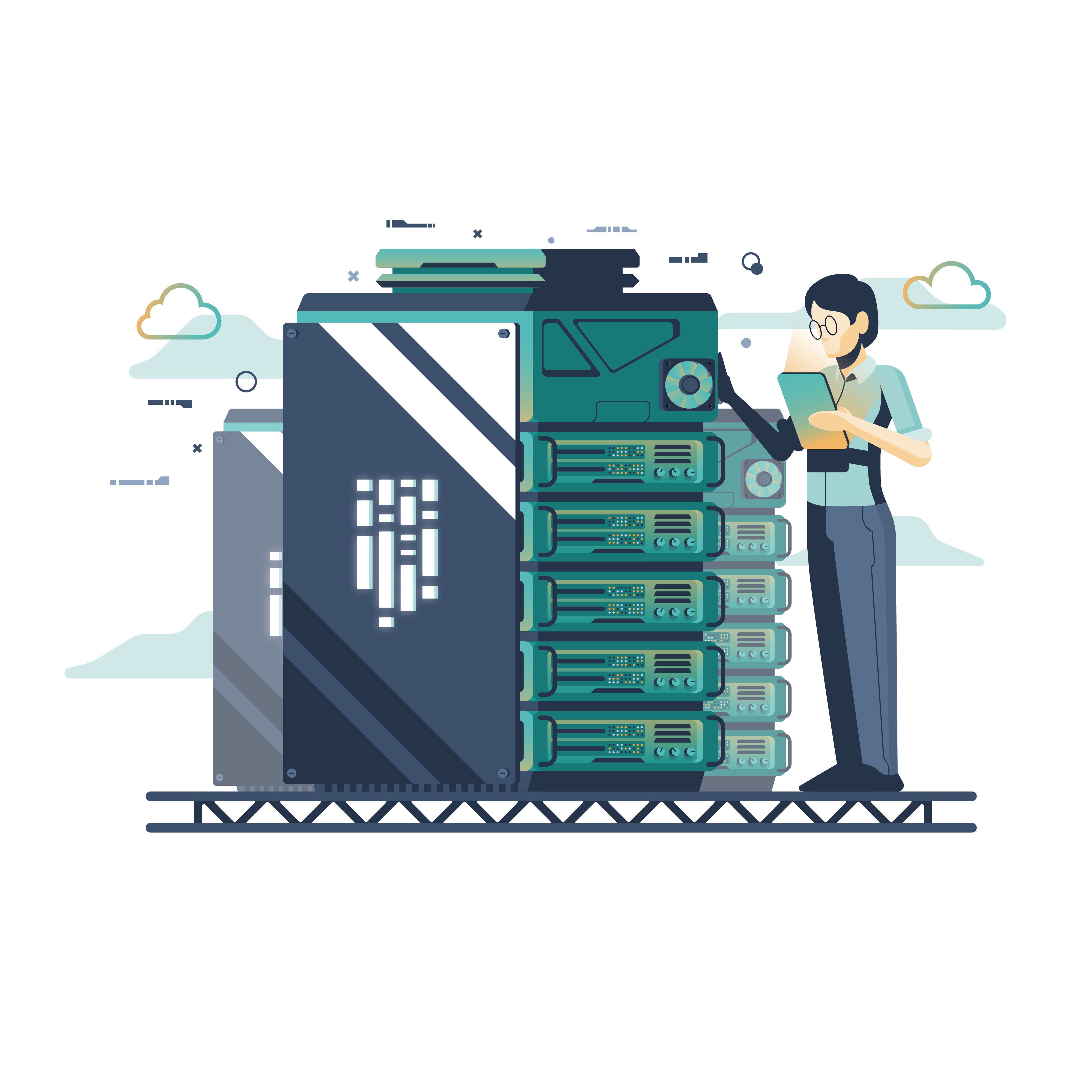 You're a large company looking to migrate from on-premise to cloud, but the move may take months or even years.
You're a large company looking to migrate from on-premise to cloud, but the move may take months or even years.
You’re on the polar opposite side to a startup - your exec team has finally made the decision to move your infra to the cloud, which means there is going to be a phase where you will have to handle both environments. Depending on where you are in your cloud journey and your dev workload, it could be a couple of months, a year, a couple of years, or even more. If you are a massive enterprise with basements full of server rooms, you might not even have the time to migrate everything before another strategic decision is taken. Future acquisitions will have to be taken into account, where you might find yourself in a situation where you will have another complete infrastructure to handle.
A hybrid cloud approach may be the perfect solution - not just for the time being, but also in the long term. It’s a lot more manageable and sophisticated than a one-cloud, one-approach attitude, and instead takes the best of both worlds and prepares you for anything the future might throw at you.
 You see the benefit of hybrid cloud but have concerns about the level of maturity of your applications and governance of your tools, processes, and people.
You see the benefit of hybrid cloud but have concerns about the level of maturity of your applications and governance of your tools, processes, and people.
And it’s a completely valid concern! Hybrid cloud rollout is not a process to take lightly - especially when you have to think about the success of your business and the happiness of your developers. Adopting a fresh new strategy will require untangling the web of complex tooling solutions in the fast-moving tech environment and a lot of trial and error.
But even more important than the necessary tech will be the cultural and organizational change you will have to make at your company. Hybrid cloud changes the way your devs will interact with your infrastructure, and how they approach your product roadmap. Hybrid cloud is about agility, trust, and autonomy.
But these things don't come from a tool and it’s something that enterprises find remarkably difficult to achieve. So can you overcome the challenges of hybrid cloud? Incidentally, we actually wrote an ebook about that! In Life in the Fast Lane: The dual journey to DevOps and hybrid cloud mastery, we discuss the pitfalls of hybrid cloud adoption and show you ways of how DevOps (and Cycloid) can help you avoid them.
{{cta('2751bbfa-7996-4e11-8cff-b2d294262e73','justifycenter')}}
Conclusion
It’s true - the move to hybrid cloud will be a different journey for cloud-enabled organizations than for cloud-native ones. But to neglect the benefits of hybrid cloud now will mean setting a trap for your future self.
According to a study by Vanson Bourne, 92% of respondents who currently run on-premises infrastructure have deployed or plan to deploy a hybrid infrastructure. You could wait another year, or five, but the transformation of technology and business will happen with or without you. Secure your organization and future-proof your tech today, so you won’t have to worry about tomorrow.
Most importantly, don’t end upon’t falling into a pit that you didn’t even know about!
...Voice your opinion in the DevOps Institute Upskilling IT survey and enter to win a $100 Amazon gift card or donate $100 to the charity of your choice. 3 winners will be selected for each month the survey is open.
The demand for DevOps professionals is on the rise. DevOps is no longer a question of if organizations need it or not, but rather a question of when to adopt it. Back in 2020, the pandemic pushed global workforce development several years forward into a “next normal” that will require an army of skilled IT talent to succeed. Almost 2 years later, we’re still feeling the effects of this huge cultural change.
What does the IT landscape look like now? How have IT teams adapted to reality? Did the changes from 2020 stick long-term or were they just a necessary means in an extreme situation? That’s for you to tell us.
Here at Cycloid we strongly believe in the culture of empowering and upskilling your team, which is why we are inviting you to take part in this year’s DevOps Institute Upskilling IT survey.
Last year over 2,000 respondents gave their professional insights from the trenches of dealing with the new normal, adapting to market demands and maintaining their teams. This real-life data truly helped us get the full picture of the state of IT and DevOps in 2020, identify common trends, successes, and market gaps. Here’s some of the truths the DevOps Institute revealed:
- 49% of respondents would rather upskill their internal team than look for external DevOps professionals (here at Cycloid we wholeheartedly agree!). Hiring for DevOps is difficult - it is much easier (and resource-effective) to empower your existing team with the right training and tools.
- 70% of IT professionals think that a learning culture was one of the top DevOps ways of working. Change mindset and adaptability - 2 things that both the new normal and DevOps rollout have in common. However, the majority of respondents were not excited about the existing learning tools and opportunities - has this changed in 2021?
- 68% of respondents show that a DevOps leader must be skilled in empowering and developing others and be able to go beyond one’s ego to help the group. Focus on developer experience became one of the most defining moments of this year.
Over the past 3 reports we’ve seen a growing focus on the human aspect of IT - that’s why, this year, the DevOps Institute is homing in on cognitive and human skills.
The survey will be open to all organisations and positions until January 31st 2022. Take 25 minutes to reflect on your 2021 and participate in the global sharing of knowledge.
Your answers will allow us to better understand which IT skills are essential for the future, ensuring that organizations are able to accelerate their digital journey. And if that’s not enough of an incentive, the DevOps Institute is giving away $100 Amazon gift cards to 3 contributors each month.
Help us shape the future of IT and DevOps and make your voice heard!
{{cta('12bb033f-3e3f-4dd7-8e29-1ac245817637','justifycenter')}}
...This year Cycloid was happy to participate once again in DevOps D-Day - a one-day event in Marseille, France in the very impressive and famous velodrome stadium!
The event covers presentations on all kinds of topics in the vast field of DevOps (which we love as you know), as well as technical and business discussions with product demonstration booths. And of course, our wonderful team was ready before the doors opened!
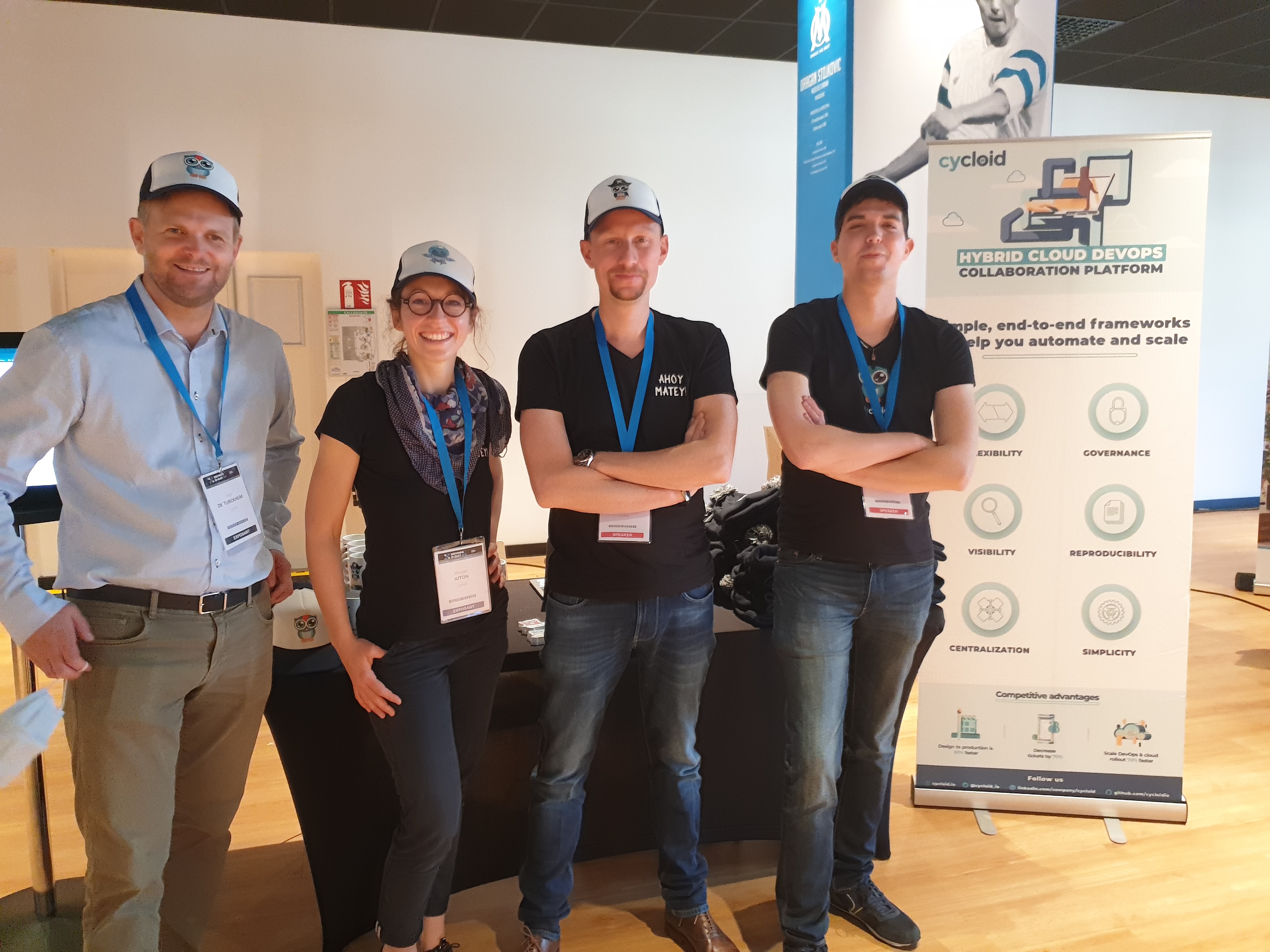
From left to right: Olivier de Turckheim (Solution Architect & Customer Success Manager), Meggie Juton (Senior Account Executive), Benjamin Brial (Founder), Chamseddine Saadoune (DevOps & Evangelist)
Fun fact: we had brought in hundreds of goodies and other winter swag, and guess what? They all went like hotcakes. Who said our little owl wasn't cute?
More than 30 conferences in one day!
Yes, it’s a lot. And while almost the whole team proudly and bravely presented Cycloid to the 150+ people who came to our booth (and we thank them ❤️), Chamseddine (so, me) was busy attending as many conferences as possible.
What did I learn?
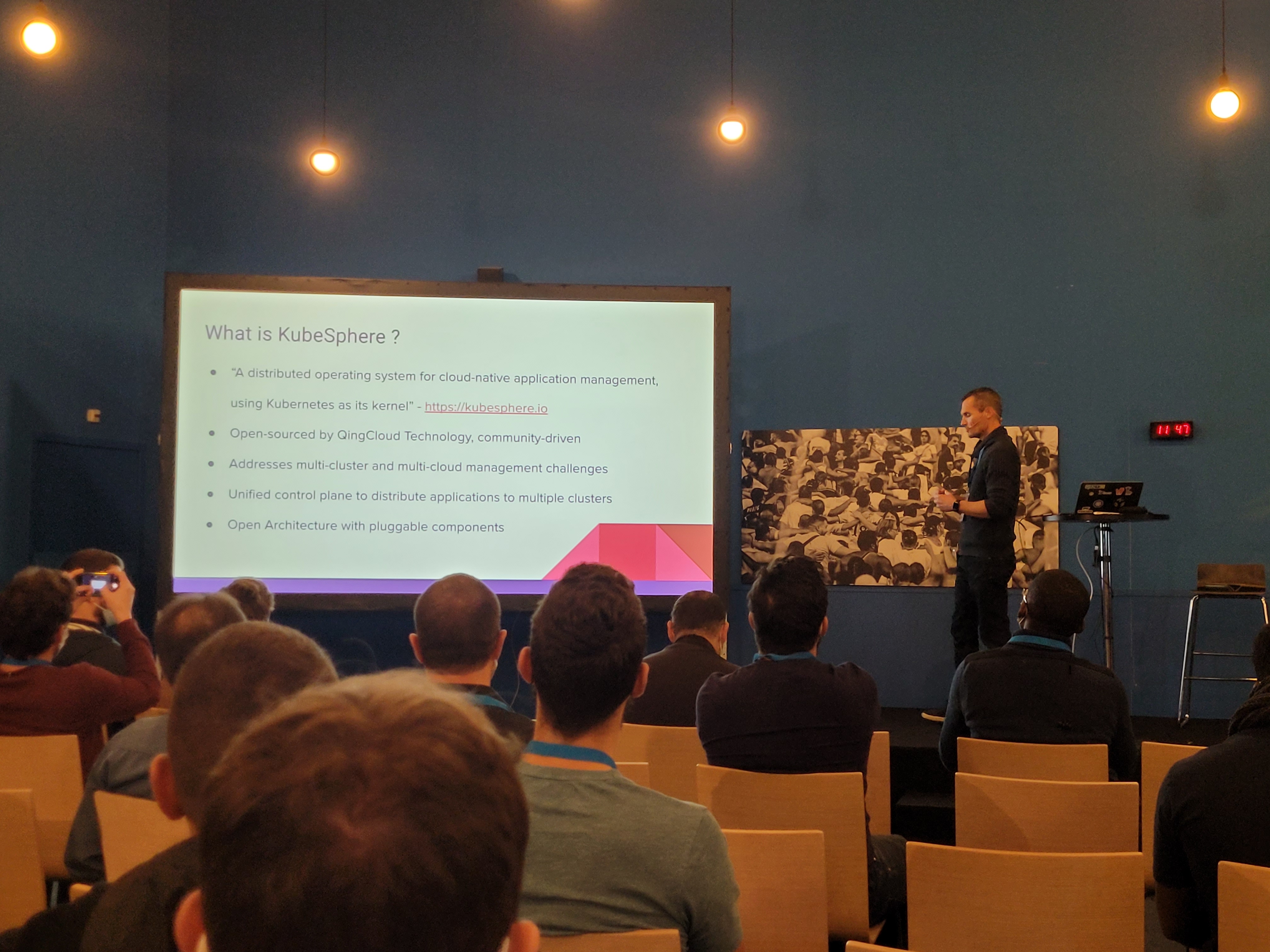
For this edition, Kubernetes was everywhere!
In fact, a lot of things. First, I was able to see a fascinating presentation by Luc Juggery on KubeSphere, a web platform for managing Kubernetes clusters. The KubeFed project was also highlighted. Currently in beta, KubeFed allows you to coordinate the configuration of multiple Kubernetes clusters from a single set of APIs in a hosting cluster. It reminds me a bit of the Cluster API, a Kubernetes sub-project, but KubeFed seems to go a little further. Very interesting!
Second, I participated in a very engaging talk about security in public clouds, led by Giuliano Ippoliti. With excellent clarity, (it deserved a shoutout!), he brilliantly explained the key steps to managing the security of infrastructure on the public cloud, using the security management consoles offered by the cloud service providers, setting up a SIEM (Security Information and Event Management) system or even a SOAR (Security Orchestration, Automation and Response). This sentence resonated with me: "A SIEM without a SOC (Security Operations Center) has no use". That’s true - often tools without methods and teams that are ready to use them are unlikely to work!
Finally, I was looking forward to attending the talk from the creator of Kaisen Linux (Kevin Chevreuil) and the presentation on the use of GitPod that I particularly appreciated (thank you Philippe Charrière!). Unfortunately, I was not able to attend in full for a very specific reason...
Time for the Cycloid talk!
I was quite busy finalizing the preparations for my first talk with Cycloid’s Founder Benjamin Brial! While quite stressful, it was a very enriching experience and I was more than happy to tackle a subject that is close to my heart.
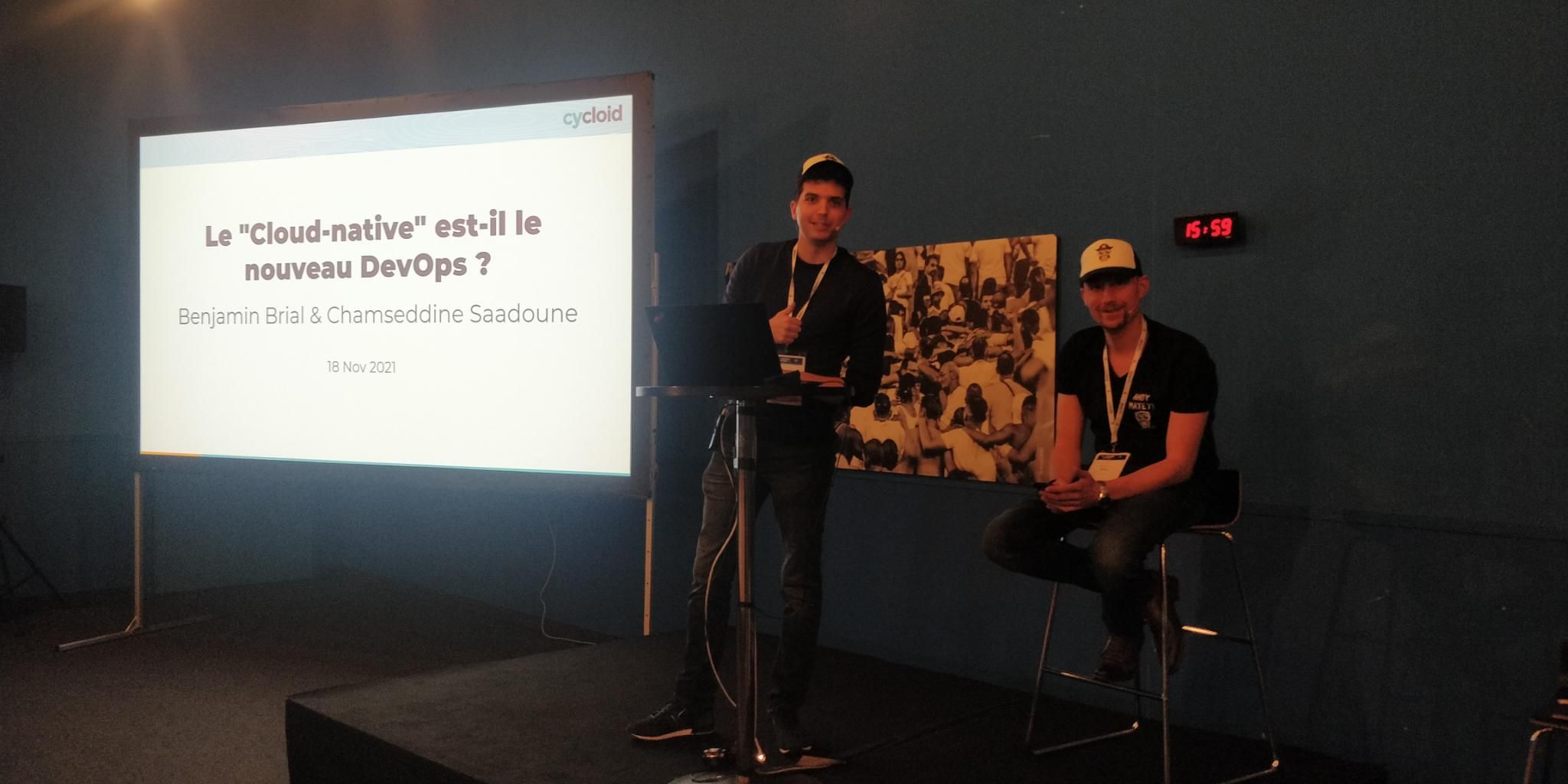
One minute before the start of the show!
What’s the subject exactly? Well, two actually! The objective of this talk was to address the concept of cloud-native in relation to DevOps. A bit of technique, good customer feedback, and voila! - you have a recipe for a great presentation.
If you're curious, you can find the presentation slides in French here.
This is how the 6th edition of DevOps D-Day ended. The day was much too short but intense enough to have exhausted us by the end.
Want a cool Cycloid goodie for yourself? Don't miss our next event appearance! Check out Cycloid's upcoming events on this page and come say hi (in-person or online!)...We know that to truly thrive in today’s business environment, you need agility. That means giving some of the control back to your devs, in order to allow them to make more agile, flexible decisions about your infra and the applications running on it. One thing you don’t want to give up control over, though? The bill for those oh-so-agile changes.
If this thought has ever occurred to you, you're going to like Cost Estimation. It gives you back control of your cloud costs - everyone capable of running up cloud expenses will now be able to see a real-time estimation of those costs before the resources are deployed. Your devs are about to become your greatest asset in keeping your cloud costs firmly under control.
This cost control aspect is an obvious win, but there are even more reasons why Cost Estimation makes an excellent addition to the Cycloid platform.
Greater peace of mind for your DevOps automation
For a start, being aware of and responsible for their own cloud costs helps techs feel independent and allows them to work truly autonomously, confident that the decisions they make are the best ones for the situation. As we talk about more in the free ebook Develop the DevOps mindset, autonomous, empowered devs are exactly the kind of people you want on your team.
Another consideration: if you’re one of our many customers who are still slightly dubious about infra-as-code, Cost Estimation is here to put your mind at ease. One of the major benefits of IaC is the ease and speed with which it allows techs to spin up new resources. Ease and speed are great, but not when they extend to the cost of your multi-cloud. Now those interacting with IaC will have built-in cost information, every time they use StackForms or Pipelines, so they'll always be able to check their spending.
One of Cycloid’s greatest aims is to help make DevOps more accessible. Cost Estimation is another facet of this, giving more visibility into an important aspect of cloud management - how much it costs. In the past, this would have been known only by a select few - non-technical team members may not need to know, but allowing them to see and understand it does offer a more accessible, visible SDLC.
.png)
Using Cost Estimation
You’ll see Cost Estimation when you log into the console. If you’re not already a Cycloid user, find out more about our DevOps solution or ask our team for a hands-on demo.
{{cta('b1c7d7b0-b414-4526-ac40-1ce3726abf7e','justifycenter')}}
Cost Estimation is based on TerraCost, our open-source version. You can find it over on GitHub.
...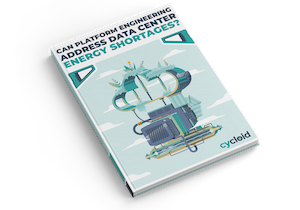
Can Platform Engineering address data center energy shortages?
In this eBook, we dive into how platform engineering can play a pivotal role in tackling the energy crisis faced by data centers.

The Art of Platform Engineering
This ebook will clear up any confusion you may have between Platform Engineering, Internal and self-service portals.

The Definitive Guide to GreenOps
This ebook will be your roadmap to success in a world where environmental responsibility takes center stage.

Guardians of the Cloud: Volume 2
Part 2 of our comic book sees the start of an environmental rebellion and attempts to use cloud resources more efficiently.
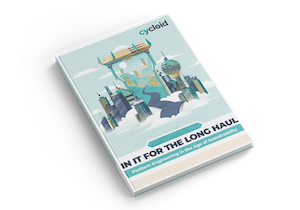
In It For The Long Haul: Platform Engineering in the Age of Sustainability
Enable smarter, more environmentally conscious cloud consumption decisions at every level of a business, and more efficient processes for your teams.
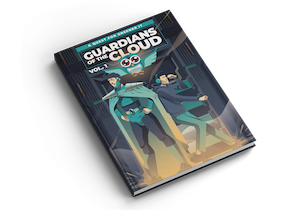
Guardians of the Cloud: Volume 1
Welcome to Guardians of the Cloud, a brand-new comic book series that takes you on an unforgettable journey to Cloud City – a place of endless innovation that harbors a deep secret.

Life in the fast lane: DevOps and hybrid cloud mastery
In this ebook, we show you how to roll out DevOps and hybrid cloud at the same time, while taking as few risks as possible.

IAC Migration for forward-thinking businesses
Read how to alleviate some of your infra-related anxieties with a simple tool. Here are the answers to some of your most burning questions.
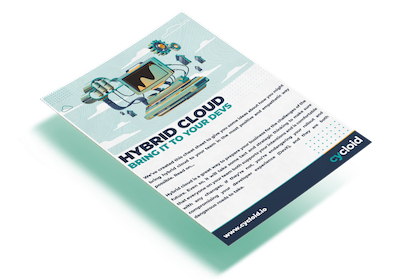
Infosheet: hybrid cloud - bring it to the devs
Are you a team leader, tasked with bringing hybrid cloud to your team? We’ve put together 5 practical, actionable tips to make the rollout easier and the DevX smoother

Life in the fast lane: DevOps and hybrid cloud mastery
In this ebook, we show you how to roll out DevOps and hybrid cloud at the same time, while taking as few risks as possible.

Insight: Businesses need to start thinking about that DevX Factor
We believe that you should empower your existing teams to reach their full DevOps potential. How to deliver that DevX factor – insight by Rob Gillam.
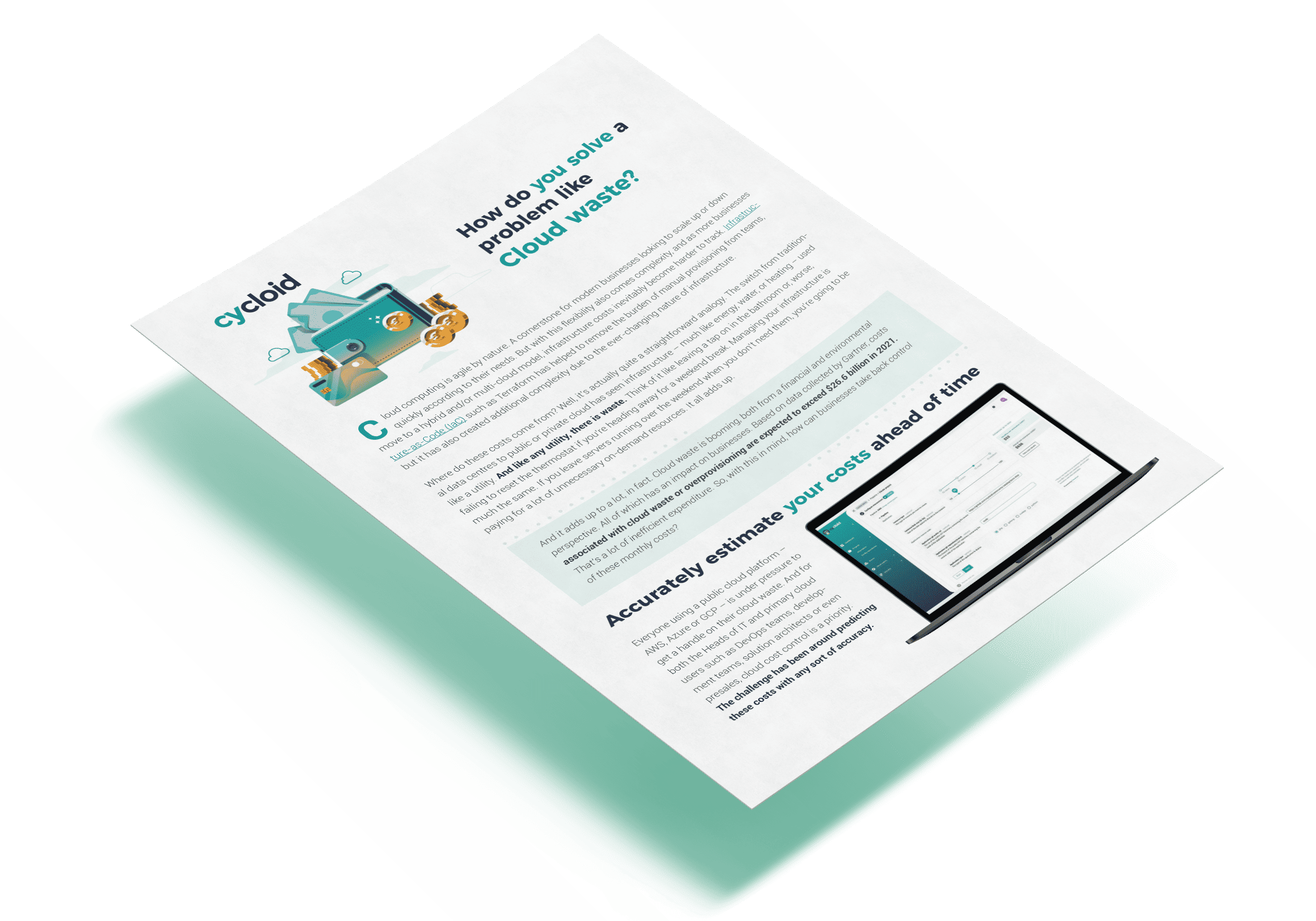
Insight: How do you solve a problem like Cloud Waste?
Without supervision, running cloud expenses will add up and cost you success. Read about Cycloid’s solution to cloud cost estimation and monitoring – insight by founder Benjamin Brial.

Infosheet: Infra as Code by Cycloid
We believe Infra as Code is the only approach to software development that lets you scale safely and successfully, so let us soothe your concerns and lead you confidently into the wonderful world of IaC with this infosheet.

Infosheet: Governance with Cycloid
We know, we know. Governance isn’t cool, but it is essential! Cycloid builds it in from the ground up, so your experts have all the control they need, without cramping the style of the rest of your team. This infosheet explains our approach and what tools you’ll have at your disposal.

Cheatsheet: DevOps business value - make the case to the c-suite
It’s not the message that needs to change, it’s the way you deliver it! We’ve created an infosheet with a new perspective on sharing DevOps and tech metrics with a non-tech audience.

Ebook: DevOps business value: prove it or lose it
We’ve written this ebook to help tech team leaders create better, more productive relationships with the executive team, even if you’ve really had problems communicating in the past.

Whitepaper: Get Your Team Ready for Increased Automation
This whitepaper consolidates the 3 ebooks that make up the hugely popular Plan Now, Win Later ebook series and will show you how to lead your tech team into a DevOps-first future!

Ebook: Build a culture of operational safety
DevOps will help you scale, but scaling is dangerous if you have no safeguards in place. This ebook shows you how to keep your SDLC safe, no matter what.

Ebook: Make tools and schedules work with your team
The grind – or smoothness – of their daily work is what’s going to make or break your team. Set them up for success from day one – we show you how in this ebook.

We talk to Wilco Burggraaf, Green IT lead at HighTech Innovators, to shine the spotlight on the world of Green Coding – a transformative approach that prioritizes energy efficiency.

We sat down with Sean Varley, Chief Evangelist and VP of Business Development at Ampere to discuss the intersection of AI, cryptocurrency, and sustainable technology.

Donal Daly, the visionary founder of Future Planet, joins us this time and takes us on a compelling exploration into the realm of ESG (Environmental, Social, and Governance) strategies.

We talk to Guillaume Thibaux, Founder & CTO of Quanta.io, shining the spotlight on his visionary company that has pioneered a free solution to measure the environmental impact of a website.
Coming soon!

Up Next!
Keep an eye on this page to view upcoming episodes.
Next Episode Launch date: February 2025
Product demos
Cycloid Platform Engineering Demo Video
Improve developer experience, empower end-users and operational efficiency to increase time-to-market speed with Cycloid.
Improve DevX with Cycloid Platform Engineering
Cycloid Platform Engineering uses a simple user-friendly self-service portal and service catalog to empower your end-users.
Feature demos
Calculate the cost of resources before you deploy - Cloud Cost Estimation Tool
Cloud Cost Estimation is integrated within our developer self-service portal Stackforms to help you make the best cost-optimized decisions before you deploy.
Simple service catalog - Stacks
Preconfigure user-friendly Stacks and allow your devs to choose approved and suitable infra configurations from a custom service catalog that’s made to measure.
Reverse Terraform tool: Infra Import 2024
Infra Import industrialises your manually deployed infrastructure at scale by automatically creating Terraform files and generating IaC. Modernize your infra and future-proof your business with Cycloid.


